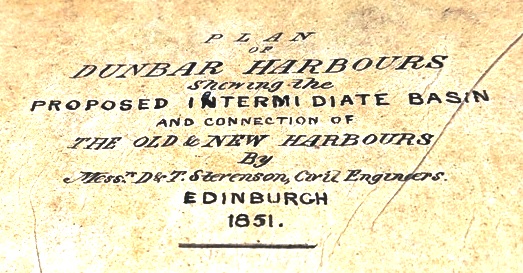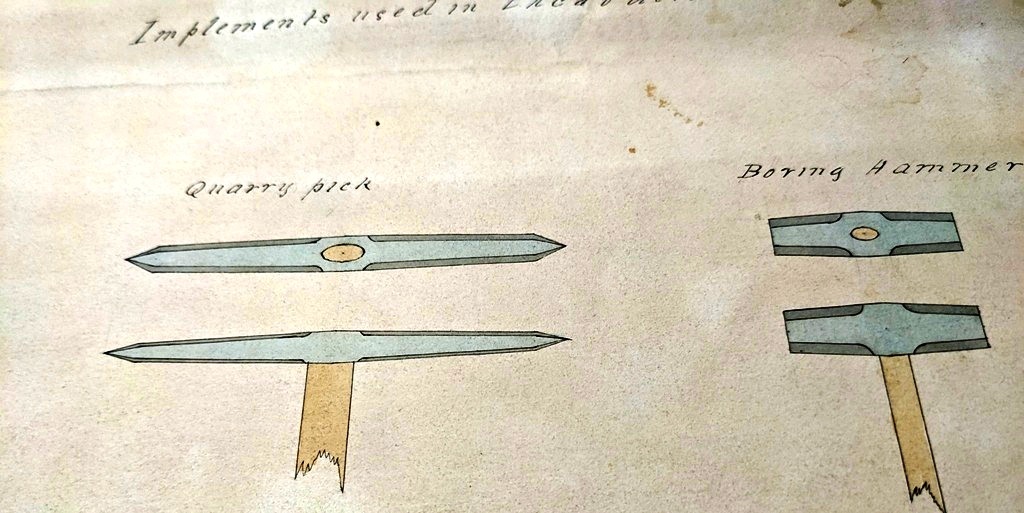March 2023
At the AGM on 11 April, Jim Herring gave a short presentation on the original Dunbar Harbour bridge, which was constructed in the early 1860s. This month, we will look at some of the notes and slides from that presentation.
I am completing a small booklet on the Battery Hospital and this will be made available to members online. The earliest mention of the hospital is in 1871 and I wondered when the bridge might have been opened to facilitate easier access to the hospital. In an article in 1968 The Old Harbours of Dunbar, which you can read here, Graham speculated that there may have been a temporary bridge linking the Victoria Harbour and the Battery, but there is no evidence for this. The first plan relating to the bridge was in 1851 and is shown in the photo below. The plan was drawn up by David and Thomas Stevenson who were brothers and the uncles of Robert Louis Stevenson, the writer. David Stevenson with his brother “designed and executed no fewer than twenty-eight beacons and thirty lighthouses”. They were responsible for the building of St Abbs Head lighthouse in 1862. Thomas Stevenson also worked with his nephew, another David, in designing and building the lighthouse at Fidra in 1885.

The photo below shows the design of the bridge and is taken from the Stevensons’ 1860 “Plan: Dunbar. Harbour, drawbridge for junction of Harbours”. Many of the Stevensons’ maps are online at the National Library of Scotland – see here for a list relating to Dunbar. This 1860 map is too fragile to be scanned, so I went to the Map Library in Causewayside to look at it and was allowed to take some photos. In the enlarged photo, you will see the winding mechanisms at each end of the bridge and until relatively recently, the bridge was opened and closed manually. Other parts of the plan show the main part of the bridge and it is indicated that 5 inch planks were used on it.

On another plan, there are drawings indicating where there needed to be excavations, mainly at the east end of the harbour, where a new pier had to be build on the edge of the battery. This pier extended from the existing harbour wall to where the eastern end of the bridge joined it. Today, if we think of harbour excavations, we might envisage large diggers and pneumatic drills. The photo below shows two of the implements used in 1860-62 and this meant that the excavations were done mainly by workmen with picks, hammers and shovels. This would have been extremely hard physical labour. The boring hammer would have been used to hammer in a long iron rods to split the rock. Also shown is a mash hammer which was “A heavy two-faced hammer, used for stone-breaking”

The article by Graham indicated that the new bridge was built in 1960 but the Scotsman, 16 February 1861 reported “We understand that the iron bridge destined to span the opening of junction is nearly ready at Mr Wilson the contractor’s foundry, Granton. The Edinburgh Evening Courant, may 18 1861 stated that “The excavations are all finished, the walls completed and the only thing that remains to be done.. is to connect the old and new harbours together. This will not take more than a week or two”. The date is therefore likely to be 1861. There may have been a formal opening reported in the Haddingtonshire Courier that year, but it will take further searching to find this.
You must be logged in to post a comment.